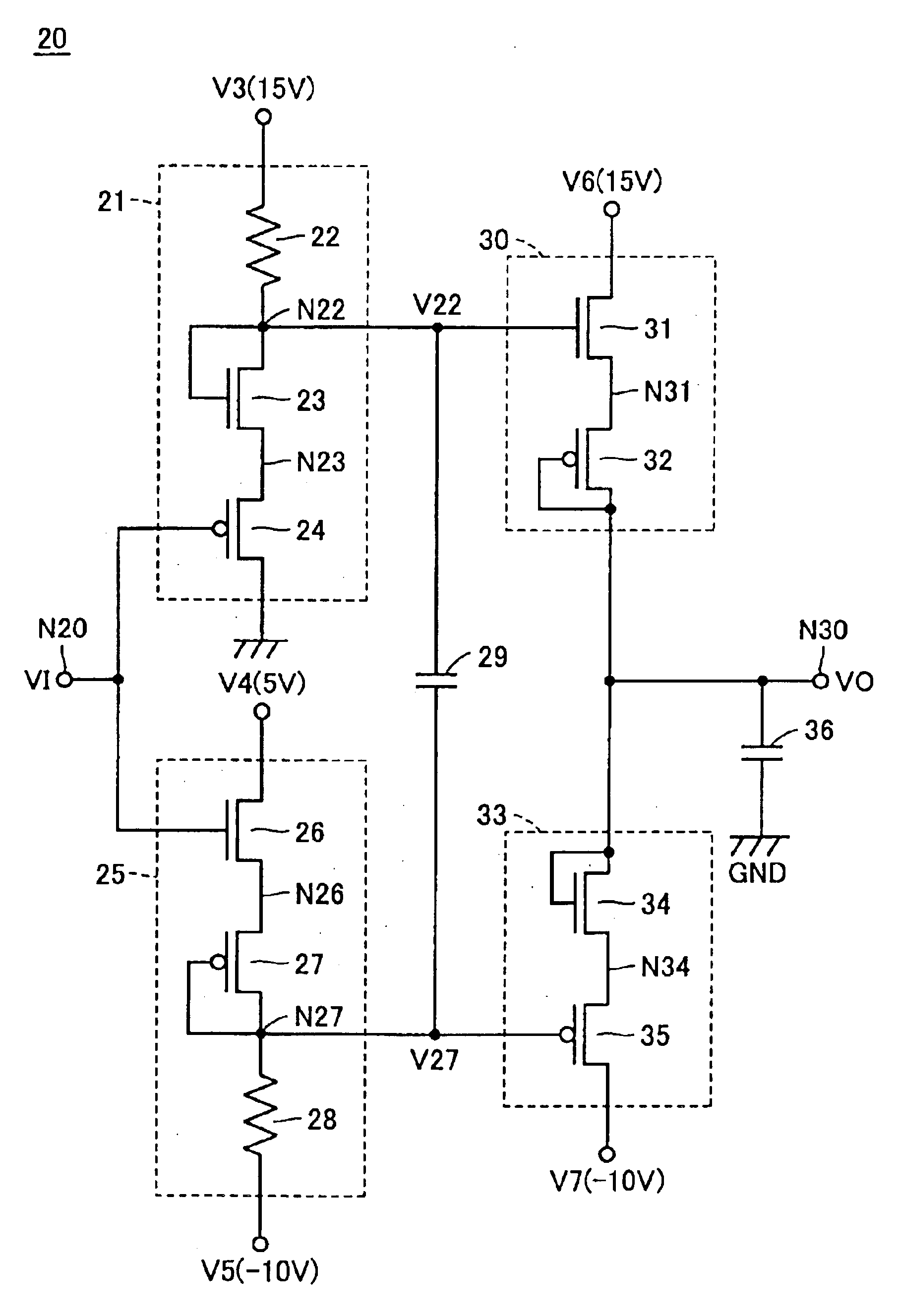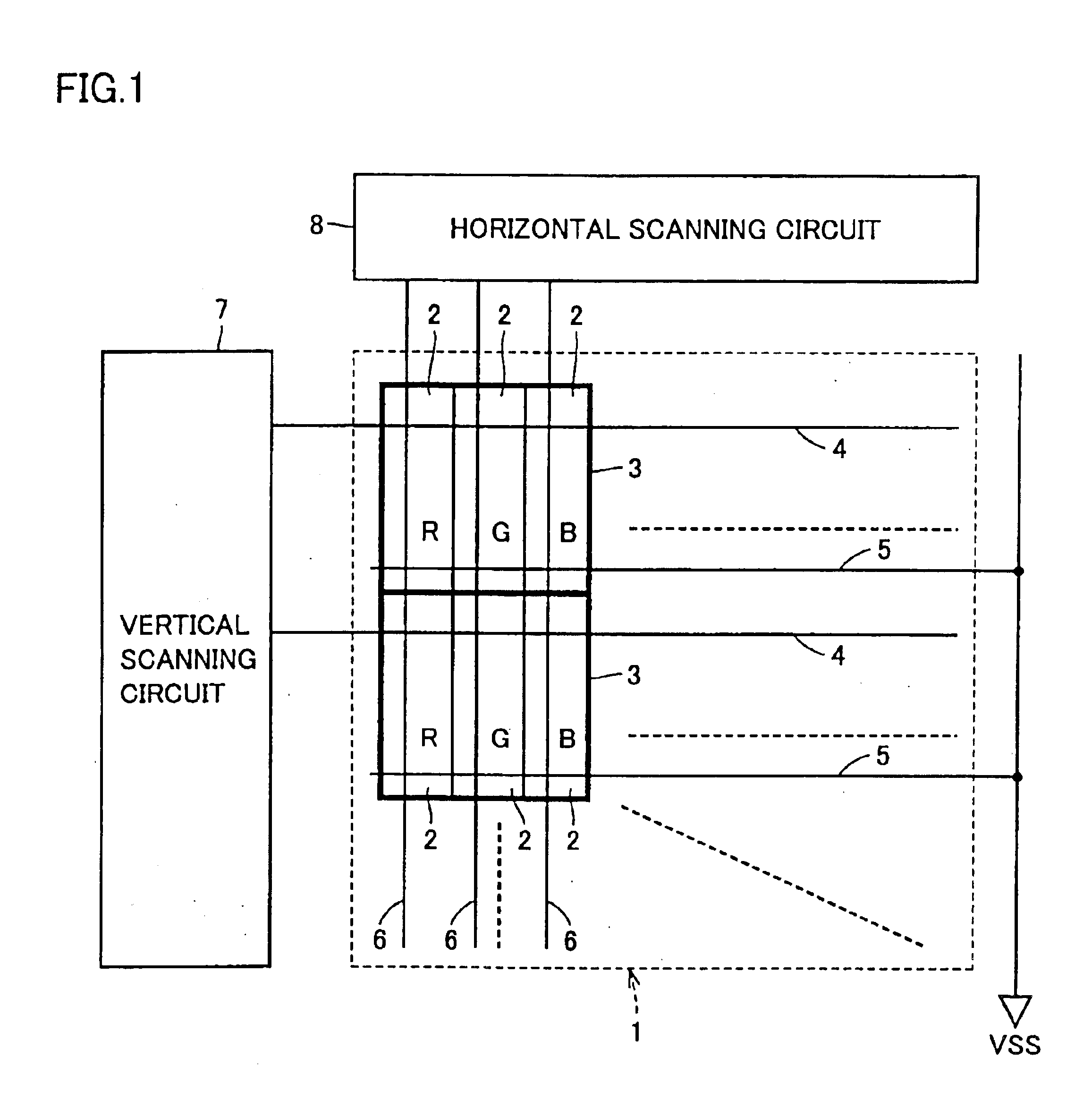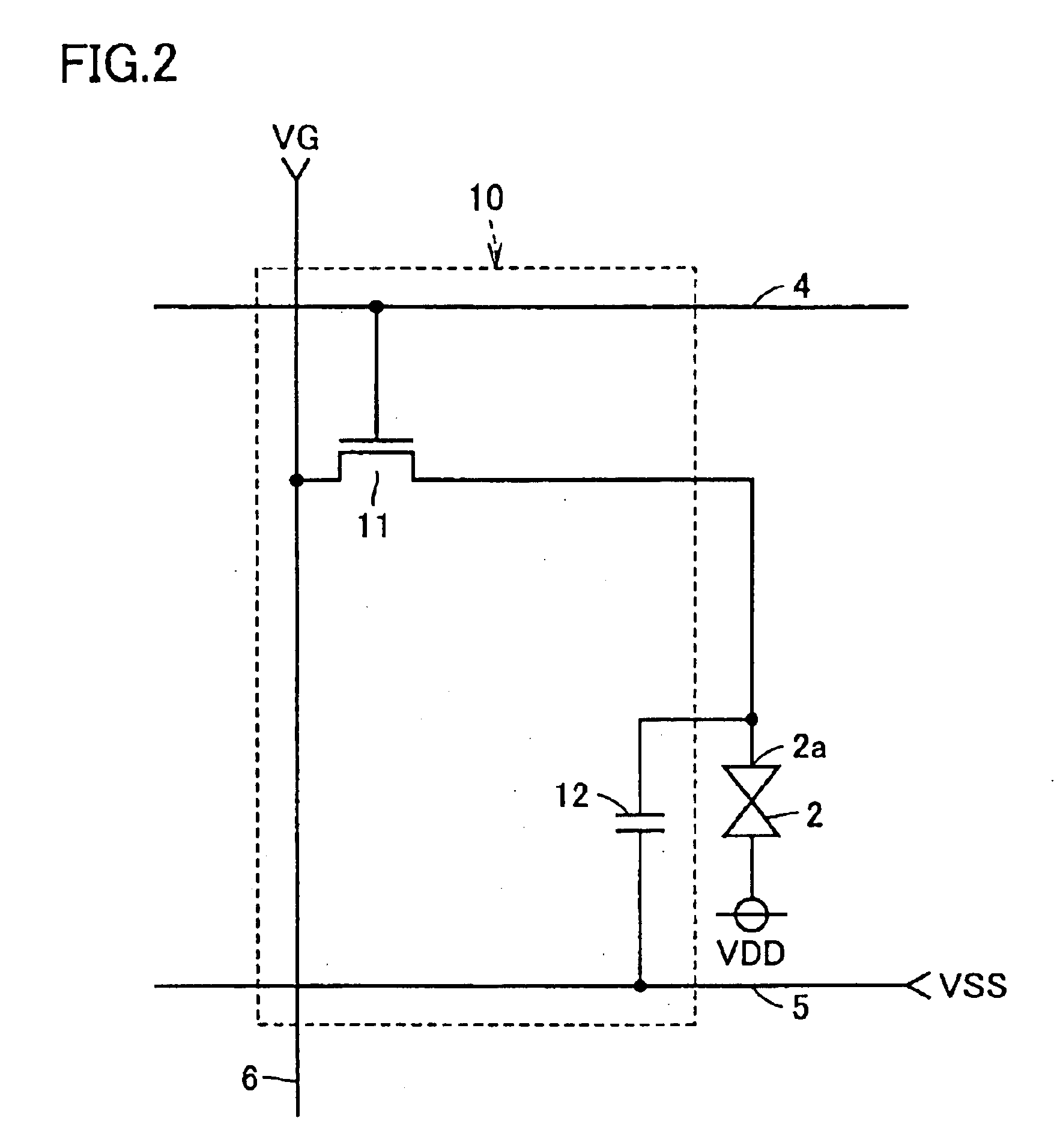Drive circuit with low current consumption
- Summary
- Abstract
- Description
- Claims
- Application Information
AI Technical Summary
Benefits of technology
Problems solved by technology
Method used
Image
Examples
third embodiment
[0131]FIG. 11 is a circuit diagram showing a configuration of level shift circuit 45 of a drive circuit according to a third embodiment of the present invention, which is compared with level shift circuit 25 of FIG. 4. Referring to FIG. 11, level shift circuit 45 is different from level shift circuit 25 of FIG. 4 in that N-type transistor 26 and P-type transistor 27 are replaced with fuses 46.1 to 46.m, N-type transistors 47.0 to 47.m and P-type transistors 48.0 to 48.m.
[0132]Fuses 46.1 to 46.m are all formed with aluminum wires or the like used in connecting transistors mutually therebetween. One electrodes of fuses 46.1 to 46.m are all connected to a node of fourth power supply potential V4.
[0133]The sum of gate widths of N-type transistors 47.0 to 47.m is set so as to be the same as a gate width of N-type transistor 26 of FIG. 4. The drain of N-type transistor 47.0 is connected to the node of fourth power supply voltage V4 and N-type transistor 47.0 receives input potential VI at...
fourth embodiment
[0138]FIG. 12 is a circuit diagram showing a configuration of a level shift circuit 50 of a drive circuit according to a fourth embodiment of the present invention, which is compared with level shift circuit 21 of FIG. 4. Referring to FIG. 12, level shift circuit 50 is different from level shift circuit 21 of FIG. 4 in that resistance element 22 is replaced with resistance elements 51.0 to 51.i and fuses 52.1 to 52.i, where i is a natural number.
[0139]The sum of resistance values of resistance elements 51.0 to 51.i is set to be almost the same as a resistance value of resistance element 22 of FIG. 4. Resistance elements 51.0 to 51.i are series-connected between a node of third power supply potential V3 and node N22.
[0140]Fuses 52.1 to 52.i are all formed with aluminum wires or the like used in connecting transistors mutually therebetween. Fuses 52.1 to 52.i are parallel-connected to respective resistance elements 51.1 to 51.i.
[0141]As described in the first embodiment, potential V22...
fifth embodiment
[0142]FIG. 13 is a circuit diagram showing a configuration of a level shift circuit 55 of a drive circuit according to a fifth embodiment of the present invention, which is compared with level shift circuit 25 of FIG. 4. Referring to FIG. 13, level shift circuit 55 is different from level shift circuit 25 of FIG. 4 in that resistance element 28 is replaced with resistance elements 56.0 to 56.i and fuses 57.1 to 57.i.
[0143]The sum of resistance values of resistance elements 56.0 to 56.i is set to be almost the same as a resistance value of resistance element 28 of FIG. 4. Resistance elements 56.0 to 56.i are series-connected between node N27 and a node of fifth power supply potential V5.
[0144]Fuses 57.1 to 57.i are all formed with aluminum wires or the like used in connecting transistors mutually therebetween. Fuses 57.1 to 57.i are parallel-connected to respective resistance elements 56.1 to 56.i.
[0145]As described in the first embodiment, potential V27 at node N27 is determined alm...
PUM
 Login to View More
Login to View More Abstract
Description
Claims
Application Information
 Login to View More
Login to View More - R&D
- Intellectual Property
- Life Sciences
- Materials
- Tech Scout
- Unparalleled Data Quality
- Higher Quality Content
- 60% Fewer Hallucinations
Browse by: Latest US Patents, China's latest patents, Technical Efficacy Thesaurus, Application Domain, Technology Topic, Popular Technical Reports.
© 2025 PatSnap. All rights reserved.Legal|Privacy policy|Modern Slavery Act Transparency Statement|Sitemap|About US| Contact US: help@patsnap.com



